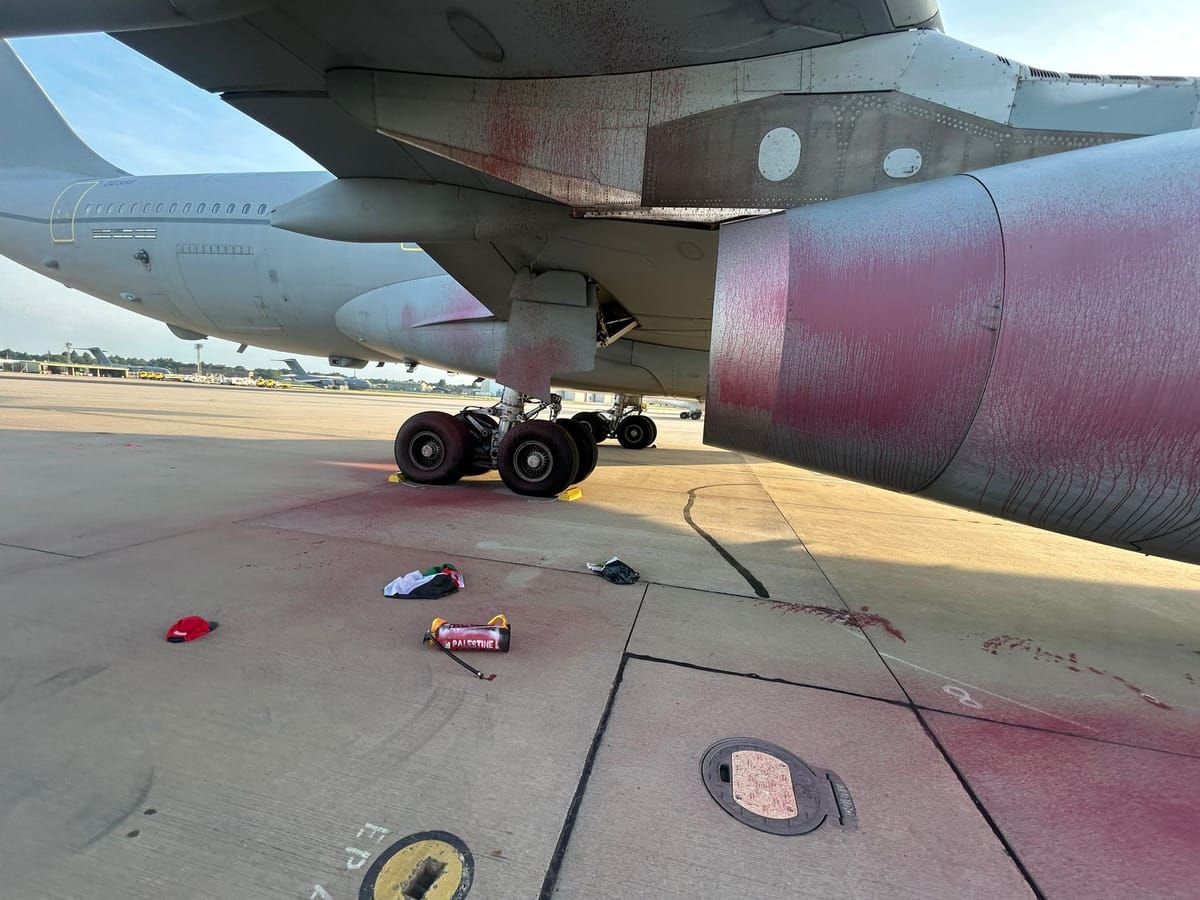The Brize Norton sabotage
The most recent reminder of this project's relevance is the Palestine Action sabotage attack on two RAF Voyager aircraft at RAF Brize Norton.

The Insurer of State is a project designed to create a new toolkit and balance sheet to help the United Kingdom handle direct liabilities and vast, economy-wide contingent liabilities. On a virtually weekly basis, we're reminded at the project as to just how relevant and required this is. The most recent reminder is the Palestine Action sabotage attack on two RAF Voyager aircraft at RAF Brize Norton. Potentially significant damage - for which an already overstrerched MOD budget and Treasury balance sheet must bear the mitigation costs.
The UK has a small fleet of high-value assets in the RAF and Navy. Unprecedented events like this, in the backdrop of increasingly volatile global risk, only serve to highlight that there is not only a lack of proper dispassionate and objective risk management taking place - but that the UK could face even more such abnormal incidents.
Was it insured - does it matter?
This post is published on the admitted assumption that the MOD does not hold a private sector insurance policy for an incident like this - that the risk is self-insured. It should be noted, that "even if" a private policy is in place that would cover this loss, it is our view that the traditional model of risk transfer is insufficient and inefficient for a state. Especially since we conceive a far more potent and powerful sovereign risk transfer mechanism. One that has its roots in the ground where only a state may operate.
As for the actions of the [now presumably] extremist group, Palestine Action, reports have shared that they posted on X that their agents:
"broke into the largest air force base in Britain and used electric scooters to swiftly manoeuvre towards the planes"
If two activists on scooters are able to inflict this kind of marquee damage to military assets, other nefarious actors shall only be emboldened to identify and damage even more soft targets.
How would the Insurer of State be helpful?
Insurers are always concerned by the three phases of risk; specifically Before, During and After - "The Event". They do this to both prevent losses, limit the impact of inevitable risk occurrence and to learn from these events. It's a positive loop.
Before The Event
To achieve this BTE competence, firstly, as the State's "insurer", the institution would be required to have an over-arching "risk management" mandate. Appropriate security clearances and suitably qualified ex-military personnel would be employed by the IoS to constantly and consistently oversee the risk management of military and security assets. This talent would complement existing plans, adding an objective and dispassionate layer of oversight. The unit would work within a larger team, one might be described as the State Risk Management Department (SRMD). It would have freedom of information rights and investigative powers - best led by former/current security service, police or military talent.
During The Event
During The Event, the subject of the risk has been given protocol and in-situ support, training and feedback to deal with a risk occurrence. The team responsible for BTE review may well identify requirements and much as traditional insurers would place warranties on certain actions being undertaken, the IoS could warrant that certain risk and protection gaps be mitigated. In the case of military equipment and bases, this is a particularly sensitive area - so output from the IoS may need to be classified on the scale of secrecy from time to time.
If the IoS were so inclined or empowered, it might augment the traditional and politically-set budgets of various departments with more budget. Capital from the Insurer of State's reserves could be awarded or granted to quickly fix pressing risk management issues - in this case, fence security apparatus. That could be on a grant or loan basis (the latter using the IoS's ability to create capital like a bank.)
After The Event
After The Event, the Insurer of State could either deploy capital from its traditional reserves (you'll recall the Insurer of State can BOTH retrieve State Insurance Premium - a levy from all insurance policies) OR create sovereign indemnity capital. This creates a new Loss Purpose Vehicle, here called "Brize I". The IoS lends that entity the capital it needs to buy bonds from the Treasury's "Debt Management Office (DMO)". The capital is hypothecated to the loss - in this case, borne by the Ministry of Defence. Thus indemnifying its budget and avoiding the Treasury having to use or raise taxes, raise more debt, or cut spending to fund such losses.
The bonds could then be arranged to be transferred across to Gilt sales over a far longer time period. Thus does a major short-term budget shock get spread over time into a long-term, mitigated event.
Let's turn the theory into practice - help us model this
As regular readers and advocates will be aware, we are creating a rational and credible qualitative thesis on how risk could be dealt with differently at state level.
We will shortly be running a virtual road show to raise sponsorship budget for the economic [quantitative] modelling we need to stress test our theories against better forecastable realities. This sponsorship requires an "escrow" partner - we are in active negotiations with several possible partners.
Your attention and support, as ever, is welcomed and appreciated.
